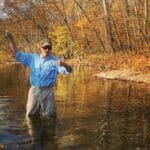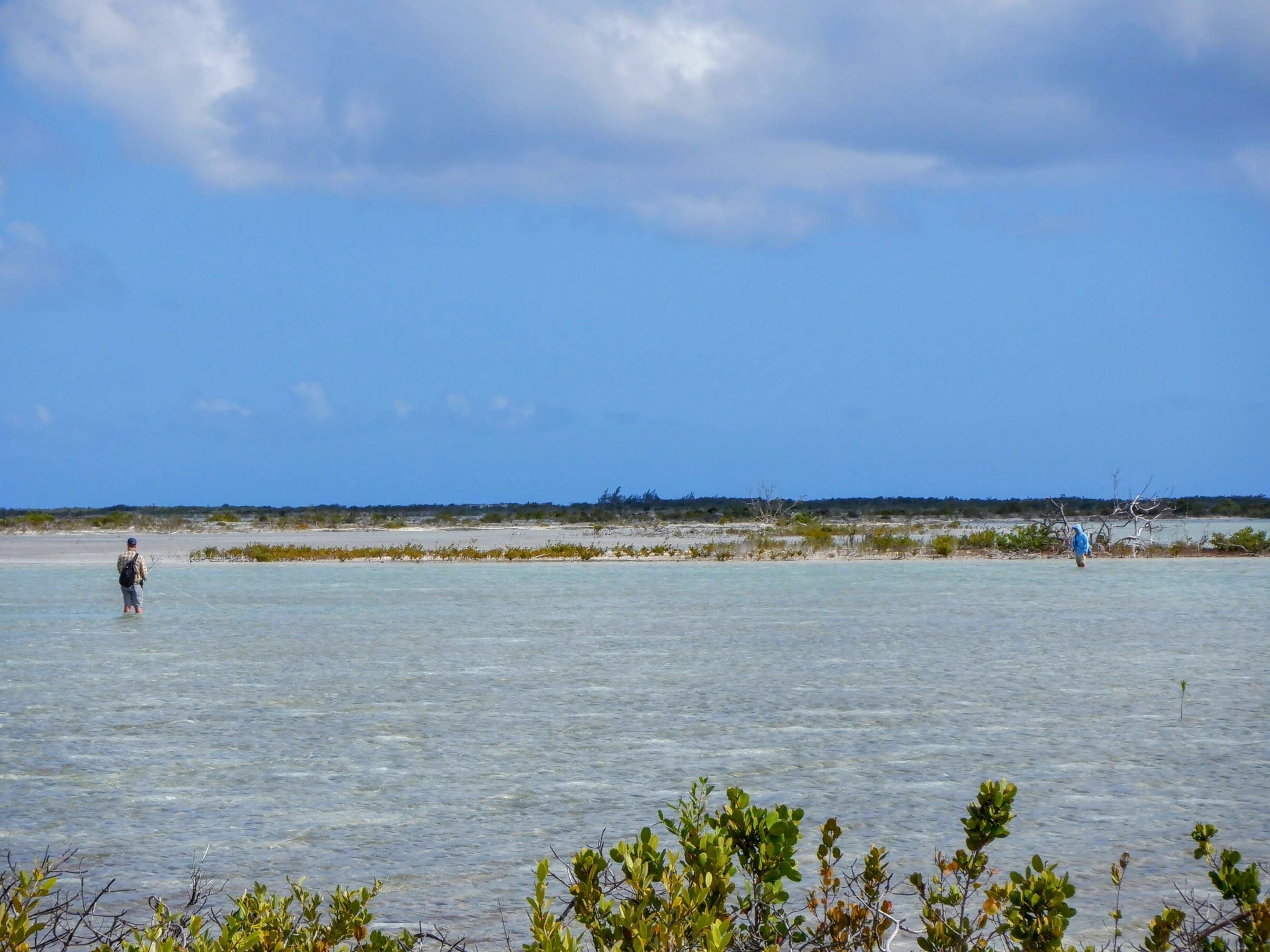There are anglers who will stand in the bow of a boat for hours waiting for a single cast at a permit. I am not one of them. Last year, I had two shots at these fish with the body of a bleached green sunfish on steroids and a fin that resembles a stick moving through the water.
My friend, Tom, explained that when fishing for a tarpon strip set once, then set again hard to get the hook into their cartilaginous mouths. “With a permit,” Tom explained, “the fish will do most of the work. It is a light strip set, and then it is off to the races.”
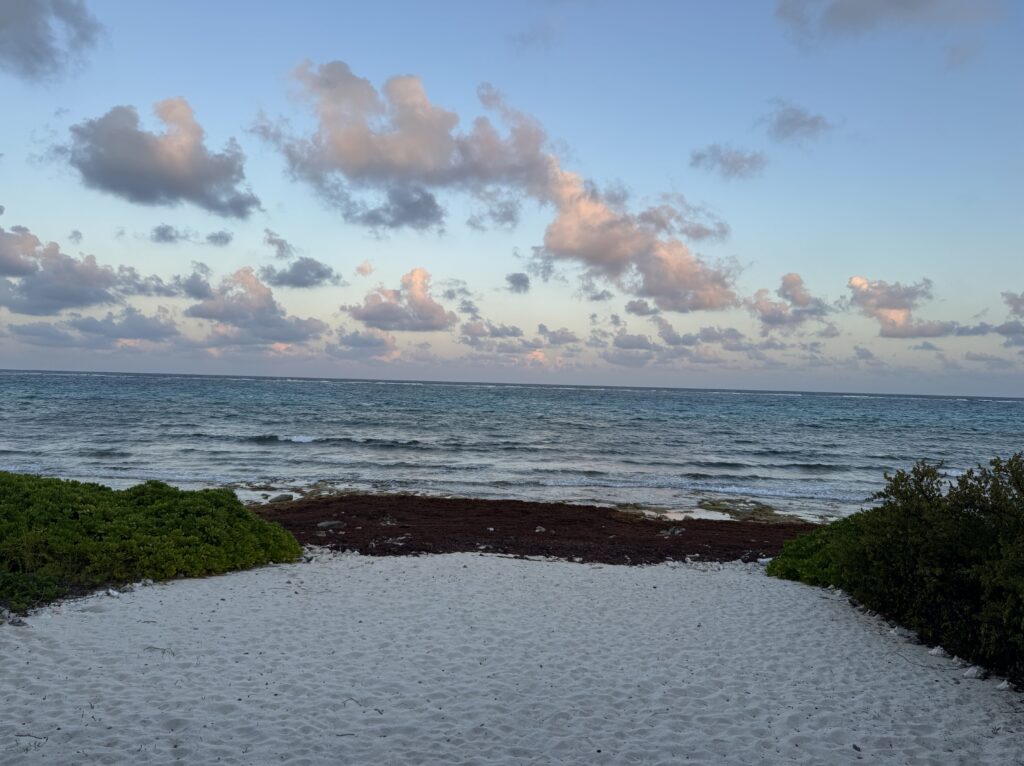
Last year while fishing in Espiritu Santo Bay, Mexico, amid the 1.3 million acre Sian Kaan Biosphere Reserve with Tom, a permit ate my crab pattern and I strip set for a tarpon, effectively taking the fly away from the fish. On the second permit, I properly set the hook, and watched the slack line pull through my left hand, which I had raised to shoulder height as the fish ran. Unfortunately, I was standing on the line.
Ping.
The guide did not speak to me for the rest of the trip.
Lessons learned
This year, I was better prepared. I am generally a relatively low budget angler, but I want to wax on a bit more than usual about gear here because one of the keys to fishing in the salt is having gear that can stand up to wind, salt and big fish.
I fished a Hardy Marksman Z with a matching Hardy Fortuna Regent reel and a new spool of 9 weight Amplitude line from Scientific Anglers.
Most importantly, I carried the lessons from last year.
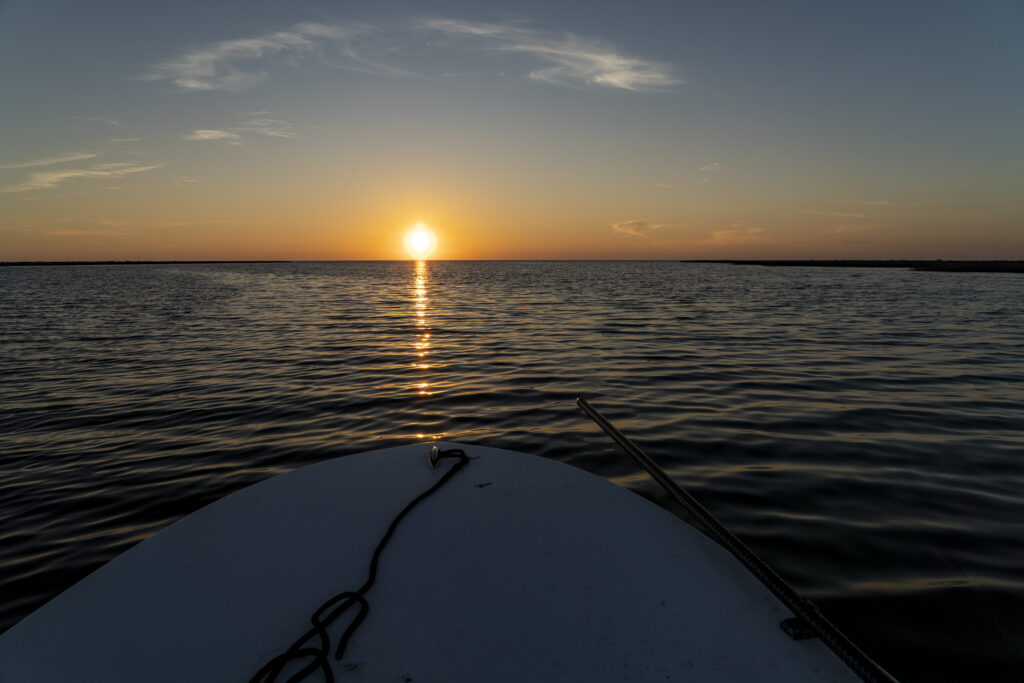
Fishing with friends and supporters to great success
I was fishing with Tom, his spouse, Noemi, and Richard. All three are excellent anglers, major supporters of TU, and most importantly, good friends.
Richard and I spent the week fishing together, and he may be the only person less patient on the bow of a boat than I. After perhaps 10 minutes on the second day, he took a few shots at a school of permit, and then said, “all right, Chris. Get up here. Your turn.”
As is often the case in Mexico, the wind was howling. We waited for the sun to come out and the guide said, “school of permit. 11 o’clock, maybe 40 feet. See them?”
I did, and I cast. The Marksman is a cannon of a rod, and the crab pattern went where it was supposed to. After a few seconds the guide said, “pick it up and recast.” I am a big believer in always doing whatever guides say as they are on the water so much more than I, but in this case, I waited because I saw a big shadow directly under my fly. When the line started to move to the right, I knew he was on.
Making sure to keep from stepping on the line, I got off the bow as the fish made its first run.
“Don’t touch the reel. Don’t touch the reel!” shouted the guide.
The fly line was soon through the last eye of the rod, and I began to wonder about the integrity of the Bimini twist I tied connecting the fly line to the backing. Within a flash, about half of my backing was gone before the fish stopped and I could gain back some line. Seconds later, he ran again. The rod pumped up and down as the backing ran and ran and ran off the reel.
I panicked when I saw perhaps 10 more wraps of backing left. I ignored the guide and palmed the reel with about five wraps of backing left on the Fortuna Regent.
Finally, I turned the fish and was able to get some backing back on the reel. After some friendly ribbing and commentary from Richard, I brought the permit to the boat.
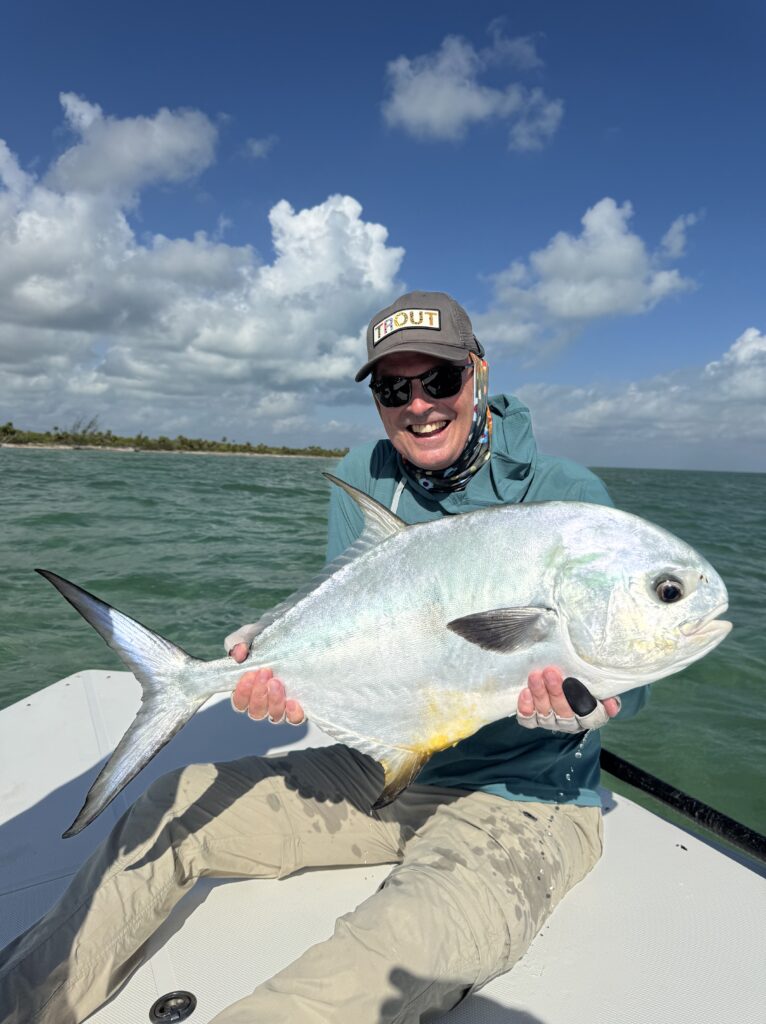
Time to rekindle friendships and share stories
Richard is a fascinating guy who regaled me with stories about a friend of his uncle who he used to hunt with and who was an ace fighter pilot in World War II. We talked about how Richard was one of the early adopters who realized the internet would change the world and how his company was the first to make credit card payments available online (for Columbia House Records. Remember them, “buy one CD for a penny, get 10 free?”).
Richard is a former board member of TU and chair of the marketing committee, so we discussed the organization’s new brand work and our plans to advance digital marketing and rely less on direct mail.
The beauty (and occasional curse depending on your mood or partner!) is that you have the time to rekindle friendships. Richard, for example, told me about his daughter’s boyfriend’s big plans to propose to her (she accepted). I shared stories about my boys and how fast they are growing up.
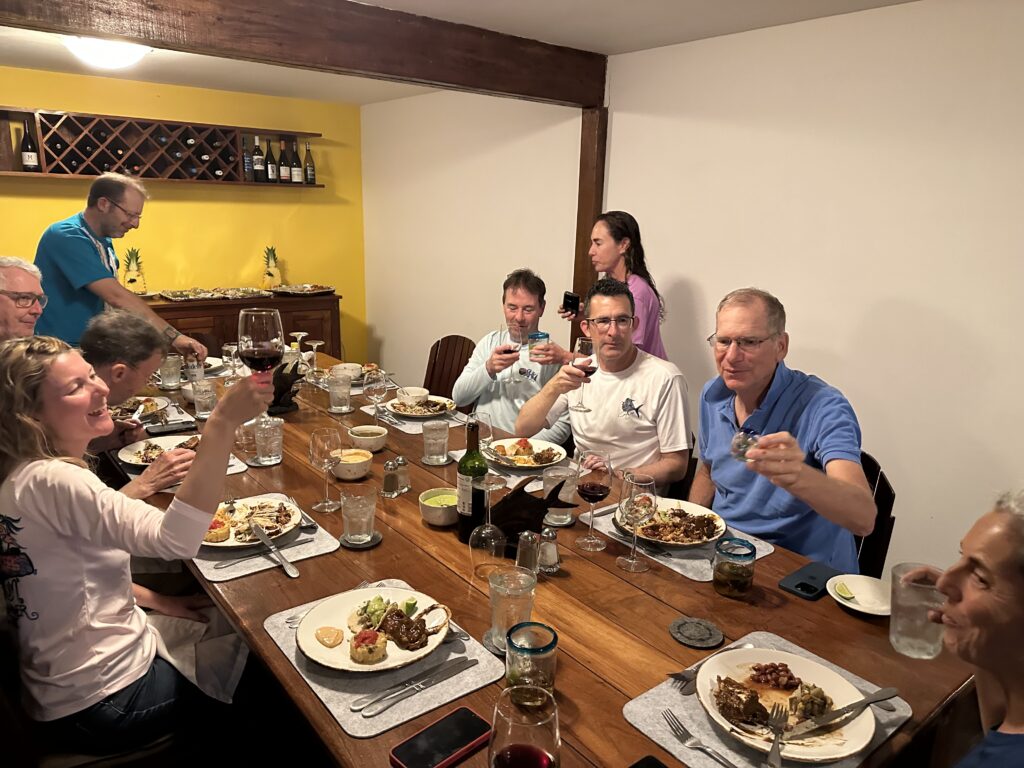
The storytelling was also true for Tom and Noemi, but that occurred in the evenings at dinner. One evening Tom told us how he had read reams of scientific papers on the four native brown trout of Italy and described their ranges and distribution. He and Noemi shared stories about their international fishing exploits and the villa they are renovating in Italy. Truth be told, I prefer to fish alone, but Mexico reminded me to set aside my misanthropic tendencies.
Richard and I spent most of our time targeting bonefish. Richard loves to wade the flats looking for tailing fish, and we came upon plenty. Most of the bones in Mexico are on the smaller side, but Richard managed to hook a nice 6–7-pound specimen on a small shrimp.
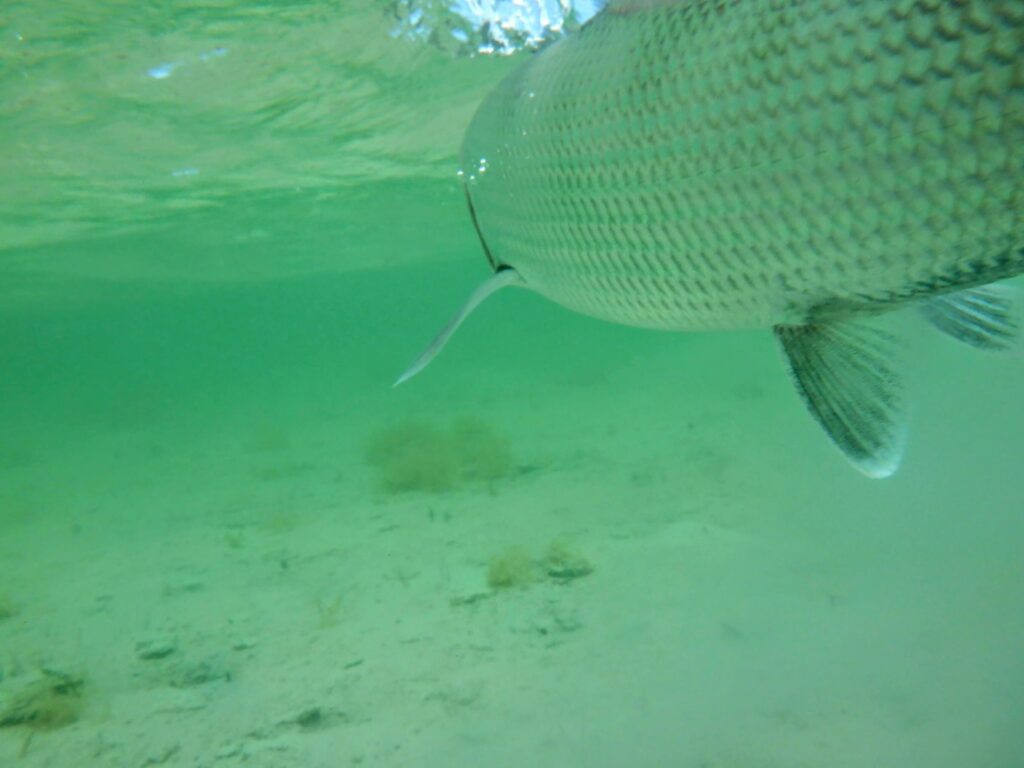
Great gear from great partners
My go to bonefish rod was the Airlite Salty 9-foot, 7-weight with an Evolution R saltwater Ross reel. In a nod to my artistic sensibilities, I particularly appreciated the contrast of the teal rod against the gray salt flats pro RIO line. Although it is considered a mid-range rod, the Airlite’s taper was designed by casting gurus Gareth Jones and Jeff Wagner, and I had no trouble cutting through the wind. For its part, the Ross Evolution reel may be my new favorite. The reel is lightweight, and the drag is sensitive and easy to adjust, and like so many of Ross’ recent offerings, the reel comes in an assortment of cool colors.
Ross is an amazing company. They give 10 percent of every sale to conservation causes (including TU!). The company is over 50 years old, but the last thing one would describe them as is staid. They have developed reels to celebrate native trout in Colorado. They developed a reel whose proceeds benefit TU’s embrace a stream program. They even developed a “banquet” reel to celebrate the Coors beer and Colorado TU partnership.
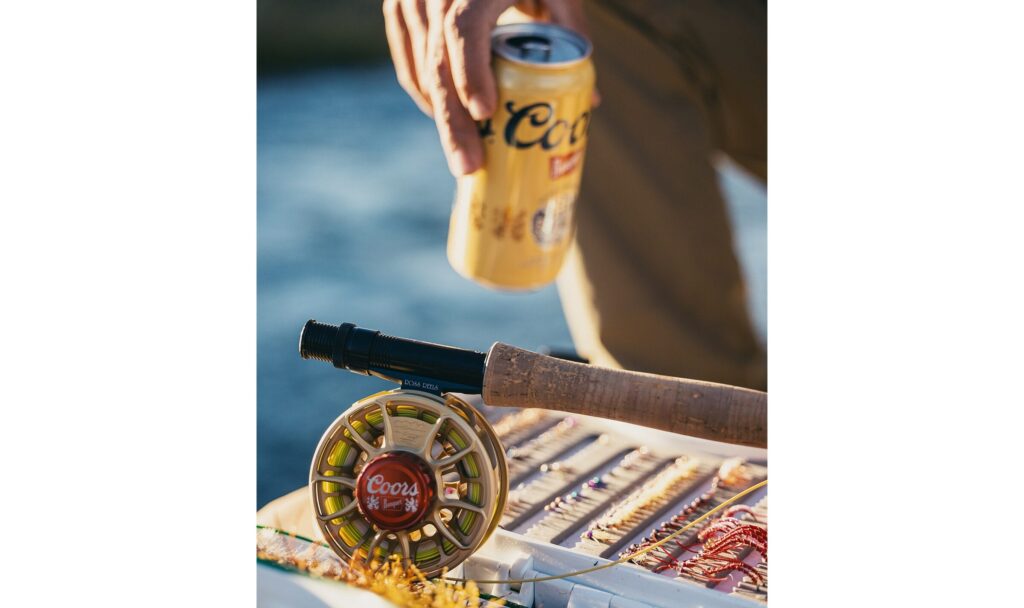
Fly-fishing is a low margin business, but the Mayfly group which owns Ross has committed more than $150,000 to TU’s conservation efforts in the coming few years. Their commitment to conservation is similar to our friends at Simms who have made major investments in the restoration of the Gallatin in Montana; Orvis who supports work in Vermont and in Bristol Bay; and Hardy who has helped by creating a special reel to raise funds for TU.
I think also about the hundreds of fly shops around the country who routinely donate rods and other gear to help benefit the local conservation work of TU chapters around the country.
A friend of mine calls me an everyman angler because I am as happy on the Potomac casting to shad as on the bow of a boat seeking big permit, but the beauty of a place such as Espiritu Santo Bay is that it reminds me of what an intact ecosystem looks (and fishes!) like, and why our efforts to care for and recover our waters back home matter.


